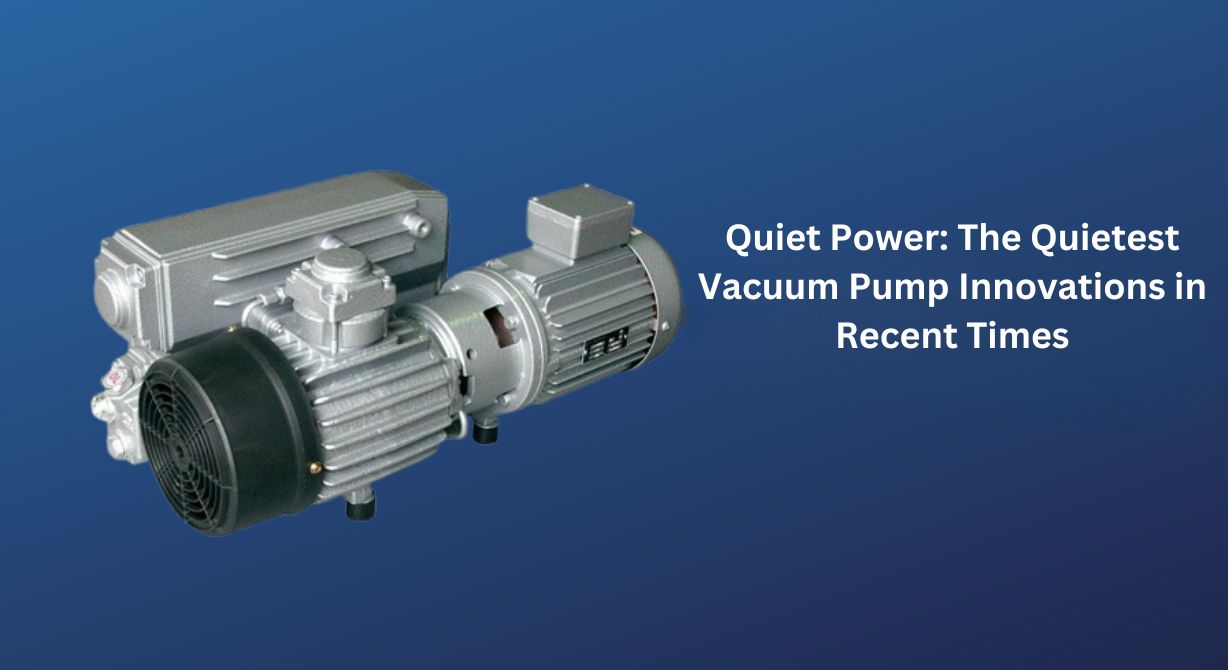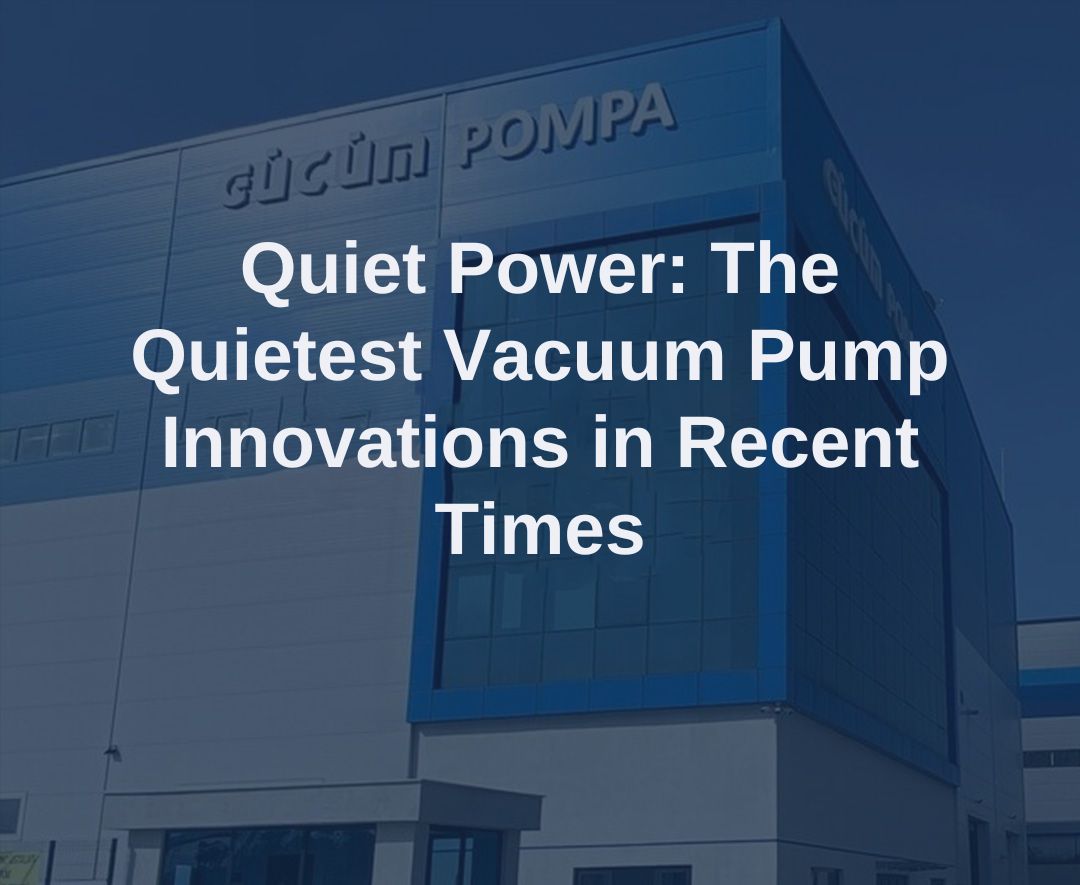Quiet Power: The Quietest Vacuum Pump Innovations in Recent Times
Table of Contents
- What Are the Quietest Vacuum Pump Technologies? Here Are the Next-Gen Innovations
- What to Consider When Choosing a Quiet Vacuum Pump?
- Do Quiet Vacuum Pumps Really Sacrifice Performance?
- What Are the Latest Innovations Ensuring Silence in Industry?
- Energy Efficiency and Silence: The New Face of Vacuum Pump Innovations
- Differences Between Quiet Vacuum Pumps and Standard Models
What Are the Quietest Vacuum Pump Technologies? Here Are the Next-Gen Innovations
In vacuum pumps, silence is no longer just a luxury but has become a mandatory requirement for many industries. Therefore, vacuum pump technologies are rapidly evolving, offering innovative solutions that improve comfort in the working environment without compromising performance.
One of the most important recent innovations is the smart sound insulation technology. These systems minimize vibrations inside the pump, significantly reducing noise levels. Additionally, advanced sound-absorbing materials used in the pump housing play a major role in preventing sound from escaping.
Furthermore, electronic speed control allows the pump's operating speed to be automatically adjusted based on demand. This prevents unnecessary high-speed operation, saving energy and reducing noise. This technology offers great advantages especially in systems with variable workloads.
Magnetic bearings and frictionless movement mechanisms eliminate mechanical noises caused by traditional pumps. As a result, pumps operate quietly and have longer lifespans.
Finally, remote monitoring and control systems enable operators to track pump performance in real-time, detect issues early, and optimize maintenance scheduling. This supports both silent and efficient operation of the system.
What to Consider When Choosing a Quiet Vacuum Pump?
Choosing a quiet vacuum pump is crucial for workplace comfort and operational efficiency. First, the noise level should be prioritized among the technical specifications of the pump. Models with low decibel ratings reduce discomfort and occupational health risks at work.
Also, the vacuum pump capacity and pump type must match your needs. Wrong capacity choices cause the pump to either work unnecessarily hard or underperform. Selecting between oil-lubricated or oil-free options according to your application increases efficiency.
Energy efficiency should not be ignored when selecting a quiet vacuum pump. Low energy consumption supports environmentally friendly practices and lowers operating costs, providing long-term economic benefits.
Ease of maintenance and spare part availability are critical for pump lifespan and performance. Brands with wide service networks offer quick solutions during failures.
Finally, material quality and durability ensure the pump runs quietly and lasts long. Evaluating all these factors together is key to selecting a quiet and efficient vacuum pump.
Do Quiet Vacuum Pumps Really Sacrifice Performance?
One of the most common questions about quiet vacuum pumps is whether they sacrifice performance. Their lower noise levels compared to traditional pumps may lead users to think performance is compromised. However, modern vacuum pump technologies completely dispel this misconception.
Thanks to advanced acoustic insulation and vibration control technologies, quiet vacuum pumps operate without sacrificing high performance. These pumps provide both low noise and high efficiency due to optimized internal designs and material use.
Especially, electronic speed control and smart sensor systems automatically adjust the pump’s speed and power usage based on operating conditions, saving energy and maintaining optimum performance. This balances silent operation and high efficiency.
Moreover, innovations like magnetic bearing technology reduce mechanical friction, extending pump life and preventing noise from causing performance loss.
In conclusion, modern quiet vacuum pumps offer user-friendly and efficient solutions without compromising performance compared to traditional models.

What Are the Latest Innovations Ensuring Silence in Industry?
Noise pollution in industry significantly affects worker health and productivity. Therefore, silence technologies have greatly advanced in recent years. Innovations applied especially to high-noise equipment like vacuum pumps make work environments more comfortable.
New-generation acoustic insulation materials and vibration reduction systems minimize the noise emitted by industrial machines. These technologies, combined with optimized internal components, effectively block sound waves radiating outward.
In addition, electronic speed control and smart sensors optimize the operating speed and power of industrial equipment to prevent unnecessary noise production. These systems use real-time data analysis to ensure machines run only at the needed performance levels.
Magnetic bearing technologies reduce friction, extending equipment life and minimizing mechanical noise. Also, remote monitoring systems enable better maintenance scheduling, preventing sudden noise spikes caused by failures.
These innovations increase industrial silence while also offering critical advantages like energy efficiency and operational continuity.
Energy Efficiency and Silence: The New Face of Vacuum Pump Innovations
Today, vacuum pump technologies are rapidly developing, with a priority on balancing energy efficiency and quiet operation. As energy costs rise in industrial applications, low-consumption and quiet pumps are increasingly preferred.
New-generation vacuum pumps use electronic speed control systems that optimize operating speed according to demand, preventing unnecessary energy use. This saves energy and minimizes noise levels.
Acoustic insulation technologies supported by special materials in the pump housing reduce sound waves generated during operation. This increases operator comfort and decreases environmental noise pollution.
Additionally, magnetic bearing technology significantly reduces mechanical friction, allowing the pump to run more quietly and efficiently. This technology also lowers maintenance needs, offering long-term usage advantages.
Smart sensor systems continuously monitor pump performance, optimize energy consumption, and allow early fault detection. These innovative approaches combine silence and energy efficiency, representing the new face of vacuum pump technology.
Differences Between Quiet Vacuum Pumps and Standard Models
The most obvious difference between quiet vacuum pumps and standard models is their noise level. Quiet pumps use special acoustic insulation and vibration reduction technologies to minimize sounds produced during operation. Standard models typically lack these advanced isolation systems and operate at higher decibel levels.
In terms of performance, quiet pumps can automatically adjust their operating speed based on demand thanks to advanced electronic speed control. This improves energy efficiency, whereas standard pumps operate at fixed speeds and may consume more energy.
There are also differences in maintenance and servicing. Quiet models often feature magnetic bearing technology that reduces friction, wear, and maintenance needs. Standard pumps might require more frequent maintenance due to mechanical friction.
Regarding durability, quiet vacuum pumps offer longer lifespans due to the use of high-quality materials and optimized designs. Standard models with simpler structures may experience performance degradation over time.
Finally, initial investment costs for quiet vacuum pumps may be higher than for standard models. However, their energy savings and lower maintenance expenses make them economically advantageous in the long run.


